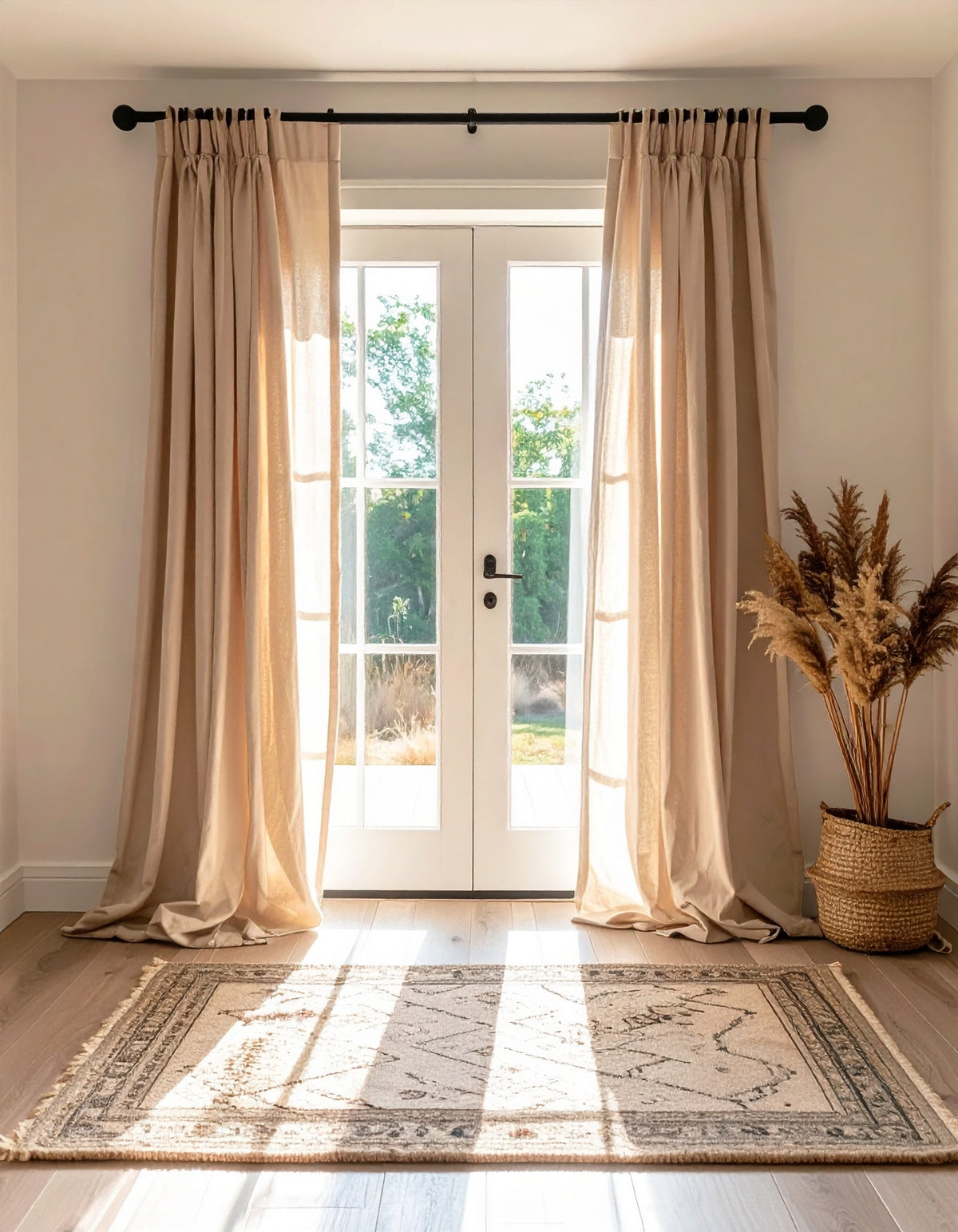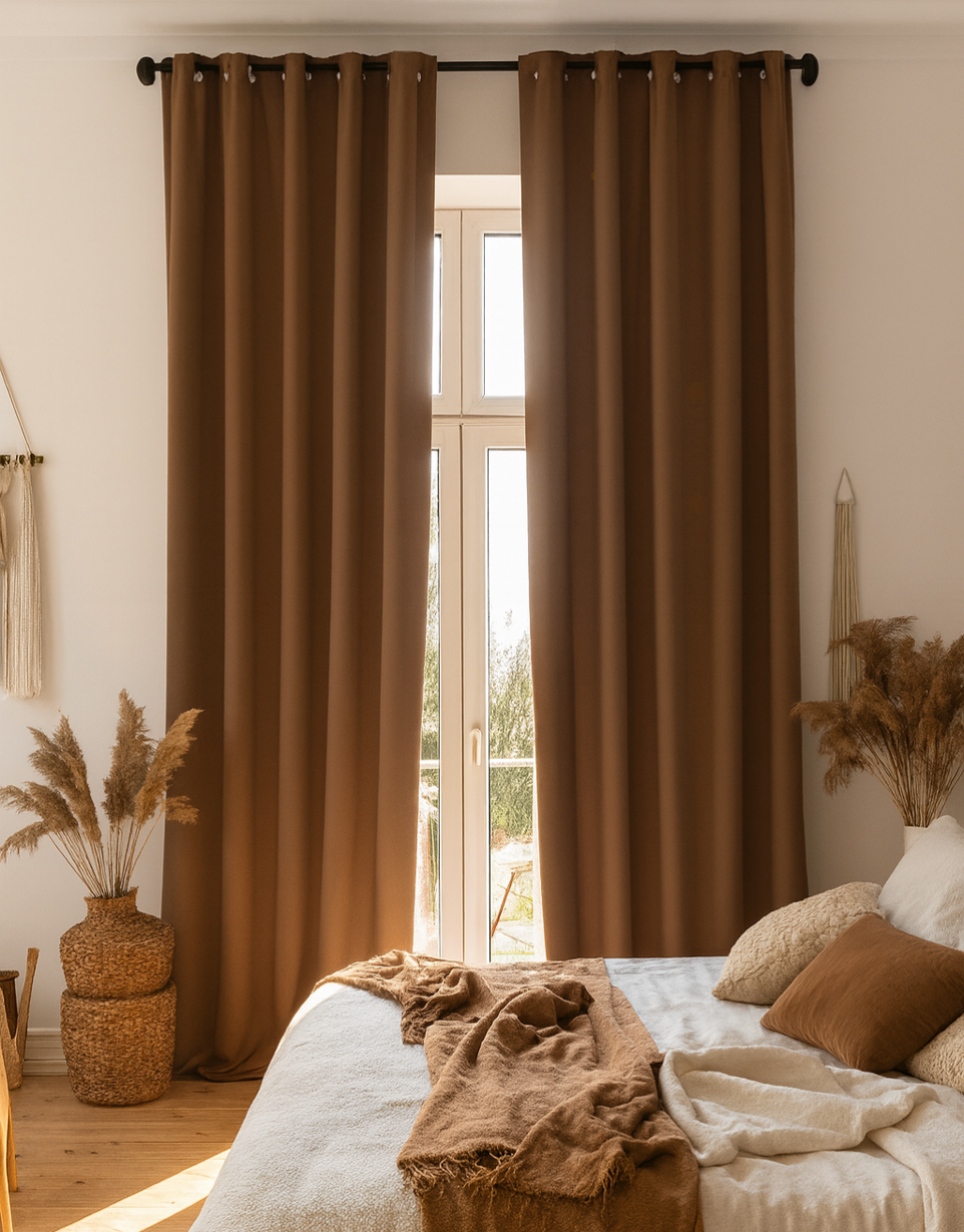Curtains frame light, soften a room and shape the way a space feels altogether. While fabric and length matter, the way a curtain is pleated can completely transform its character. Pleats refer to the way fabric is folded and stitched at the top of the curtain. They control how the curtain hangs, how full it looks and even how it moves when you draw it open or closed.
Pleats are the tailoring that gives curtains their flow, fullness and style. From relaxed to refined, every pleat has its own personality. Here’s a closer look at some of the most famous pleat styles, along with ideas for where they work best.
Pencil Pleat
The pencil pleat is simple, classic and endlessly versatile, with rows of narrow folds gathered together in a line that resembles a row of pencils. Because the heading tape allows you to draw the pleats tighter or looser, you can control how much fullness you want in the fabric. This makes pencil pleats adaptable to a wide range of spaces, from a casual guest room to a more formal living area. They pair well with most fabrics, but lighter materials such as cotton or linen give them a softness that feels effortless and inviting.

Pinch Pleat
Pinch pleats, on the other hand, are more structured and refined. Here, the fabric is stitched into double or triple “pinches” at the top, which creates folds that fall in even lines. The effect is tailored and traditional and gives a sense of order and polish to a room. Because the pleats are stitched in place, the curtains always fall neatly, whether open or drawn. Heavier fabrics, such as lined cottons, brocades or blends with body, are especially well-suited to pinch pleats since the structure needs fabric with enough weight to hold its shape. They are a favorite choice for dining rooms, formal living rooms or bedrooms.

Box Pleat
Box pleats introduce a different mood altogether. Instead of gathered folds, the pleats are stitched into deep, rectangular shapes that sit flat across the heading before opening into generous panels below. This creates a look that is at once structured and understated, ideal for interiors that lean toward clean lines and symmetry. Box pleats are particularly effective on large windows or patio doors, where their balanced folds can bring order and rhythm to an expansive view. Medium to heavy fabrics work best, as they give definition to the square folds and prevent the curtain from looking limp.

Euro Pleat
The euro pleat offers a tailored look without feeling overly formal. It is tacked a few inches down from the top, allowing the fabric to fan out in a clean, structured line that flows into graceful folds. This heading works beautifully with both light and heavier fabrics, from crisp linens to silks, giving versatility to different styles of rooms. Its polished finish makes it ideal for spaces where you want sophistication with a contemporary edge. The effect is refined and timeless, with just enough drama to elevate the space without overwhelming it.

Goblet Pleat
For those who want a bit of drama, the goblet pleat is unmatched. As its name suggests, each pleat is shaped like the bowl of a wine glass, round and full at the top before cascading into long folds below. This style calls for luxurious fabrics—velvet, silk or richly lined blends—that can hold the dramatic silhouette. Sometimes the goblets are even padded to keep their shape. The effect is stately and opulent, perfect for high ceilings, grand dining rooms or formal living areas where you want to make an impression. Goblet pleats do require more fabric and more care, but their elegance makes them worth it when the room calls for drama.

Wave Fold
At the opposite end of the spectrum lies the wave fold, a style embraced by modern interiors for its simplicity and flow. Instead of stitched folds, the fabric hangs on a specially designed track that guides it into soft, uniform waves from one side of the window to the other. The look is relaxed yet precise. Light fabrics like sheers or linen blends highlight the undulating folds and allow light to travel through in a soft, even way. Because wave folds glide so smoothly, they are also practical for wide windows or sliding doors where curtains are frequently opened and closed.

How to Choose the Best Pleat for Your Room
When you’re choosing a pleat style, it helps to think about two things: the fabric in your hands and the atmosphere you want your room to hold.
If you’re drawn to order and a clean look, a box pleat might be the right fit. Its square folds bring balance and structure, perfect for wide windows or spaces where you want symmetry. Goblet pleats are a different story altogether. They add drama, fullness and a bit of luxury, transforming curtains into a statement piece in the room. And then there’s the wave fold, which is all about ease and flow, creating soft, rolling lines that feel modern yet relaxed.
What’s most striking is how the very same fabric can take on completely different personalities depending on the pleat. Linen, for instance, might look light and airy in a wave fold, but in a box pleat it suddenly feels tailored and crisp. Velvet can feel understated in a pencil pleat but dramatic in a goblet pleat. In the end, the pleat is what sets the mood, so you may first need to decide whether the final look should feel casual and cozy, classic and refined or bold and dramatic.









2 comments
a0v5bj
a0v5bj